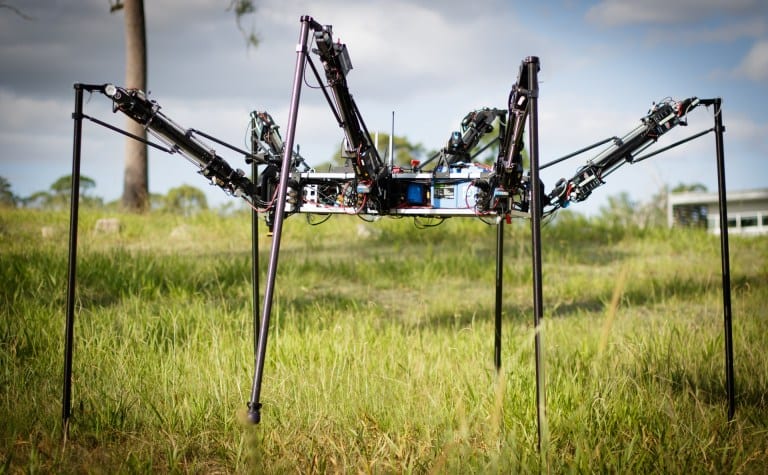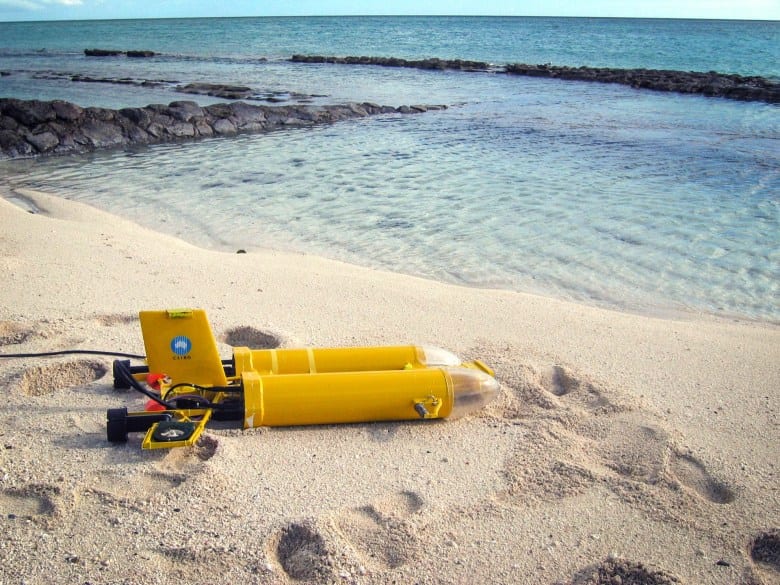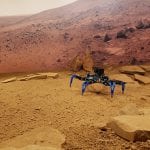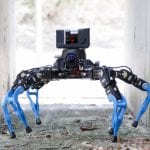
Industry
CSIRO Shows Off UAVs, UUVs and Giant ‘Robot Spiders’ at ICRA2018
CSIRO Shows Off UAVs, UUVs and Giant ‘Robot Spiders’ at ICRA2018
With ICRA2018 well under way in Brisbane, Australia this week, it’s no surprise that Australia’s leading scientific research organisation have seized the chance to show off the work they have been doing on autonomous and robotic systems.
At the QCAT Technical Site Tour yesterday, attendees were treated to demonstrations of drones and robots created by the Robotics and Autonomous Systems Group that can take to the air, land and water.
The Group conducts foundational and applied research for a wide range of applications, from precision agriculture, mining, and manufacturing to biodiversity and biosecurity, environmental research and monitoring. Known as a leader in the world of robotics research, their long track record in robotics and autonomous applications is cemented with pioneering work in 3D SLAM LiDAR technology.
Drone technology and robots that were on display featured devices that couldn’t help but capture their audience’s imagination, with creative monikers including Hovermap, Starbug, Zee and MAX.
Amazing tour this morning at QCAT @CSIROnews seeing the work done on UAVs, AUVs UGVs, AR, animal tracking, legged robots and much more!! Missed it? Check out CSIRO booth at 45, 46, 59 & 60 #icra2018 @Data61news pic.twitter.com/XKsezNtqTL
— ICRA 2018 (@ieee_ras_icra) May 21, 2018
Hovermap, a 3D LiDAR payload for small UAVs, uses CSIRO’s proprietary Simultaneous Localisation and Mapping (SLAM) solution to map areas by generating 3D point clouds such as Zebedee. Suitable for uses both indoors and outdoors, it logs the LiDAR data onboard, which is then transferred post-flight to a server for processing. Applications, say CSIRO, include asset management, infrastructure and building inspection, forensic crime scene and underground mine mapping.
CSIRO’s Starbug UUV was created to meet the challenge of collecting data needed for satellite calibrations. Such data needs to be collected as a satellite travels overhead, and is traiditonally done by ground crews using handheld devices. However, as this often needs to be done in remote locations such as Lake Lefroy, a salt lake in Western Australia, due to its bright and uniform surface, it can be difficult to conduct regular calibrations. Starbug addresses this issue by providing an affordable autonomous underwater system that can travel the lake’s width to collect the required data.

Two slightly creepy but incredibly useful ground-based drones on display were the multi-legged ‘robot spiders’ Zee and MAX.
Zee, a small hexapod robot, has been designed for remote inspection of remote, confined and dangerous environments. Carrying cameras and scanning LiDAR technology, Zee can be operated by a smartphone or tablet and can perform tasks such as inspecting hazardous chemical containers. Zee is definitely on our list of cute but creepy.
MAX (Multilegged Autonomous eXplorer) on the other hand, was the real drawcard – a giant, ultralight walking robot that brings flashbacks of JRR Tolkien’s Shelob in Lord of the Rings. Traversing complex terrains is all in a day’s work for MAX, who sports six daddy-long-leg-like limbs and stands over a human when pulled to it’s full height of 2.25m. Built to explore, MAX was created with a very low mass to size ratio, and at under 60kg is up to 20 times lighter than other robots of a similar size.
It’s #Icra2018 week – here’s a reel from our tour of the QCAT Pullenvale robotics lab, featuring six-legged bots, flying mapping tech, and more. We’re at booths 45, 46, 59 & 60 at @ieee_ras_icra ????????️????????
Read more about our robot family here: https://t.co/R55G8Kx9mv pic.twitter.com/3Ip4x8n4oO
— Data61 (@Data61news) May 21, 2018
Other drones projects underway at CSIRO include Project ResQu which is focused on developing UAVs to conduct weed surveys, and Phenocopter, a low altitude remote sensing unmanned helicopter which carries sensor payloads capable of capturing and processing aerial images of vegetation, commonly for agricultural purposes.
To see more on CSIRO’s autonomous and robot research work, visit them at ICRA2018, booths 45, 46, 59 & 60.





















